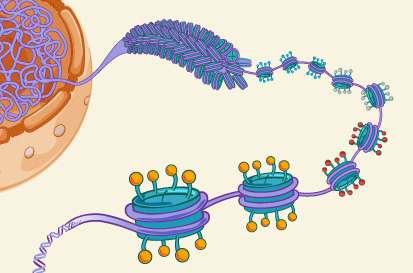
The group investigates mechanisms by which chromatin, transcription factors (TFs) and interacting regulatory sequences control gene activity, poising and repression.
People
- Chuck Epstein, PhD
- Noam Shoresh, PhD
- Will Flavahan, PhD
- Sarah Johnstone, MD, PhD
- Gabriel Griffin, MD
- Jingyi Wu, PhD
- Nauman Javed
Publications
Want to know more about this aspect of the lab? We recommend starting with the papers belowThe most highly conserved noncoding elements (HCNEs) in mammalian genomes cluster within regions enriched for genes encoding developmentally important transcription factors (TFs). This suggests that HCNE-rich regions may contain key regulatory controls involved in development. We explored this by examining histone methylation in mouse embryonic stem (ES) cells across 56 large HCNE-rich loci. We identified … Continued
Understanding the principles governing mammalian gene regulation has been hampered by the difficulty in measuring in vivo binding dynamics of large numbers of transcription factors (TF) to DNA. Here, we develop a high-throughput Chromatin ImmunoPrecipitation (HT-ChIP) method to systematically map protein-DNA interactions. HT-ChIP was applied to define the dynamics of DNA binding by 25 TFs … Continued
Recent genomic analyses of pediatric glioblastoma, a poorly understood tumor with dismal outcome, have identified mutations in histone H3 variants that affect critical amino acids in the tail. The findings extend discoveries of chromatin regulator inactivation and gain-of-function mutations by documenting alteration of a modifiable histone residue in human cancer.
Glioblastoma, the most common and aggressive malignant brain tumor, is propagated by stem-like cancer cells refractory to existing therapies. Understanding the molecular mechanisms that control glioblastoma stem cell (GSC) proliferation and drug resistance may reveal opportunities for therapeutic interventions. Here we show that GSCs can reversibly transition to a slow-cycling, persistent state in response to … Continued
Genome-wide profiling of histone modifications can provide systematic insight into the regulatory elements and programs engaged in a given cell type. However, conventional chromatin immunoprecipitation and sequencing (ChIP-seq) does not capture quantitative information on histone modification levels, requires large amounts of starting material, and involves tedious processing of each individual sample. Here, we address these … Continued
A succession of technological advances over the past decade have enabled researchers to chart maps of histone modifications and related chromatin structures with increasing accuracy, comprehensiveness and throughput. The resulting data sets highlight the interplay between chromatin and genome function, dynamic variations in chromatin structure across cellular conditions, and emerging roles for large-scale domains and … Continued
There is growing recognition that mammalian cells produce many thousands of large intergenic transcripts. However, the functional significance of these transcripts has been particularly controversial. Although there are some well-characterized examples, most (>95%) show little evidence of evolutionary conservation and have been suggested to represent transcriptional noise. Here we report a new approach to identifying … Continued
